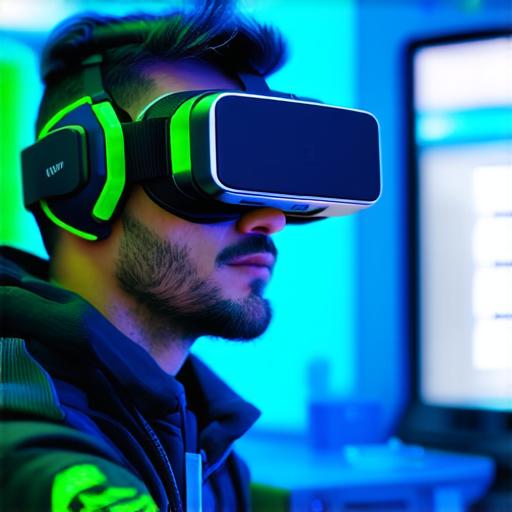Virtual reality (VR) and augmented reality (AR) are two emerging technologies that have been gaining popularity in recent years. While both VR and AR involve immersive experiences, they differ significantly in their approach to interaction with the digital world. In this article, we will explore the key differences between VR and AR and how they impact user experience.
Virtual Reality (VR)
Virtual reality involves fully immersing a user in a simulated environment that is designed to replicate real-world experiences as closely as possible. This is achieved through specialized hardware, such as headsets, gloves, and sensors, which track the movement of the user’s body and adjust the virtual environment accordingly. In VR, the user perceives a 360-degree view of a virtual world that surrounds them, creating a feeling of being in a separate reality.
One of the key benefits of VR is its ability to create highly realistic simulations. For example, VR can be used for training purposes, such as military or medical training, where users need to experience real-life scenarios in a controlled environment. VR can also be used for entertainment purposes, such as gaming or experiencing immersive movies, allowing users to fully engage with the story and environment.
Augmented Reality (AR)

Augmented reality involves overlaying digital information onto the real world, creating an interactive experience that enhances the user’s perception of their surroundings. This is typically achieved through smartphone or tablet applications that use the device’s camera to capture the real-world environment and then superimpose digital elements onto the image. AR can also be experienced through specialized wearable devices, such as smart glasses, which provide a more immersive experience.
One of the key advantages of AR is its ability to enhance the user’s understanding of their physical surroundings. For example, AR can be used in education to help students visualize complex concepts, such as anatomy or physics, by overlaying digital models onto real-world objects. AR can also be used in marketing and advertising, where companies can create interactive experiences that engage customers and provide them with a better understanding of their products or services.
In conclusion, virtual reality and augmented reality are two distinct technologies that offer unique user experiences. While VR involves fully immersing users in a simulated environment, AR involves overlaying digital information onto the real world. Both technologies have the potential to revolutionize the way we interact with the digital world and provide users with new ways of experiencing reality. As these technologies continue to evolve, we can expect to see even more innovative applications emerge in the future.
